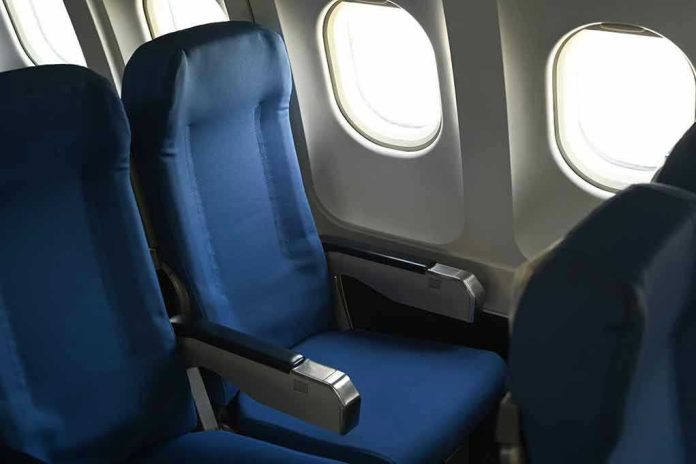
A sudden in-flight medical emergency raises urgent questions about airline safety and preparedness.
Story Highlights
- Andrés Castro, 39, died of a heart attack mid-flight, leaving his wife in distress.
- This tragic incident highlights the need for better in-flight medical response protocols.
- Cardiac events are among the most common serious incidents on flights.
- The family seeks answers as the airline faces scrutiny over its emergency preparedness.
In-Flight Medical Emergencies: A Growing Concern
In-flight medical emergencies, although relatively rare, continue to be a significant concern for the aviation industry. Cardiac events, such as the tragic heart attack suffered by Andrés Castro, are among the most common serious incidents reported on flights. Airlines are required by regulations to carry basic medical equipment and ensure their crews are trained to respond to such emergencies effectively.
Oregon father dies on flight home from birthday trip in South America after he ‘suddenly stopped breathing’ https://t.co/vY7VtjRTb9 pic.twitter.com/yZV0QEGQQN
— New York Post (@nypost) August 28, 2025
Tragic Incident Sparks Debate on Safety Protocols
The sudden demise of Andrés Castro during a flight from South America has sparked debates about the adequacy of medical response capabilities on commercial airlines. During the return flight to Oregon, Castro, a father from Clackamas, suffered a fatal heart attack, raising concerns about how airlines handle medical emergencies when advanced medical care is not immediately accessible.
The incident occurred mid-flight, with Castro reportedly stopping breathing while seated next to his wife, Suanny, who witnessed the entire ordeal. This personal and emotional tragedy underscores the unpredictability of medical emergencies during air travel and highlights the need for robust emergency preparedness.
Calls for Enhanced Emergency Preparedness
The Castro family’s tragedy has already prompted discussions about the need for improved training and access to medical equipment on flights. Aviation safety experts argue that while in-flight deaths are uncommon, enhancing crew training and equipping planes with automated external defibrillators (AEDs) could save lives during cardiac emergencies. These discussions are crucial as they may lead to policy changes that better protect passengers’ safety.
Such incidents often lead to a broader review of airline policies regarding emergency medical protocols. It is vital for airlines and regulators to re-evaluate current standards and ensure that they are adequate to meet the challenges of in-flight medical emergencies.



